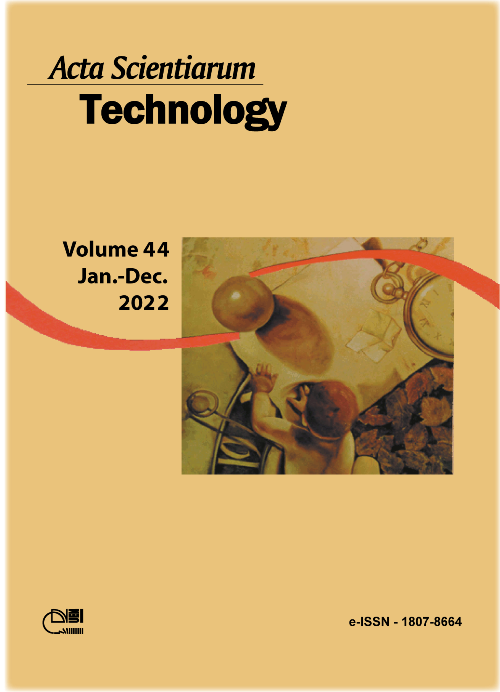Pulsed electric field for Escherichia coli inactivation in pumpkin juice and nectar
DOI:
https://doi.org/10.4025/actascitechnol.v44i1.56091Keywords:
Non thermal technology; pumpkin; electric field strength; microorganism inactivation.Abstract
In this study experiments were performed using a batch pulsed electric field (PEF) system at different electric field strengths with a voltage of 35 kV and pulse frequency of 3 Hz, at 20 and 40°C, with pulse width between 0.8 and 1.0 µs, to evaluate the inactivation of Escherichia coli in pumpkin juice and nectar. The performance of the PEF technology can vary as a function of several process parameters and the conditions and procedures applied. The physicochemical characteristics (pH, total soluble solids, electrical conductivity) of the pumpkin juice were also evaluated. The juice showed 5.01 ± 0.01 of pH, 10.70 ± 0.11 (mS cm-1) of electric conductivity and 9.85 ± 0.07 of soluble solids while in nectar, these parameters were changed to 5.11 ± 0.01 of pH, 8.54 ± 0.21 of electric conductivity and 6.40 ± 0.12 of soluble solids. The use of a temperature of 40°C and pumpkin nectar (70:30, juice: distilled water) showed no difference in the bacterial reduction compared to 20°C and using 100% pumpkin juice, since in non-thermal processes it is better to use lower temperatures for less energy expenditure and less possibility of changes in raw material. The data showed that the PEF treatment reduced the microbial load moderately in all experiments, by a maximum of approximately 2.5 - 3 log cycles with 80 J g-1 of specific energy and above 26,000 V cm-1 of field strength
Downloads
Downloads
Published
How to Cite
Issue
Section
License
DECLARATION OF ORIGINALITY AND COPYRIGHTS
I Declare that current article is original and has not been submitted for publication, in part or in whole, to any other national or international journal.
The copyrights belong exclusively to the authors. Published content is licensed under Creative Commons Attribution 4.0 (CC BY 4.0) guidelines, which allows sharing (copy and distribution of the material in any medium or format) and adaptation (remix, transform, and build upon the material) for any purpose, even commercially, under the terms of attribution.
Read this link for further information on how to use CC BY 4.0 properly.











8.png)




